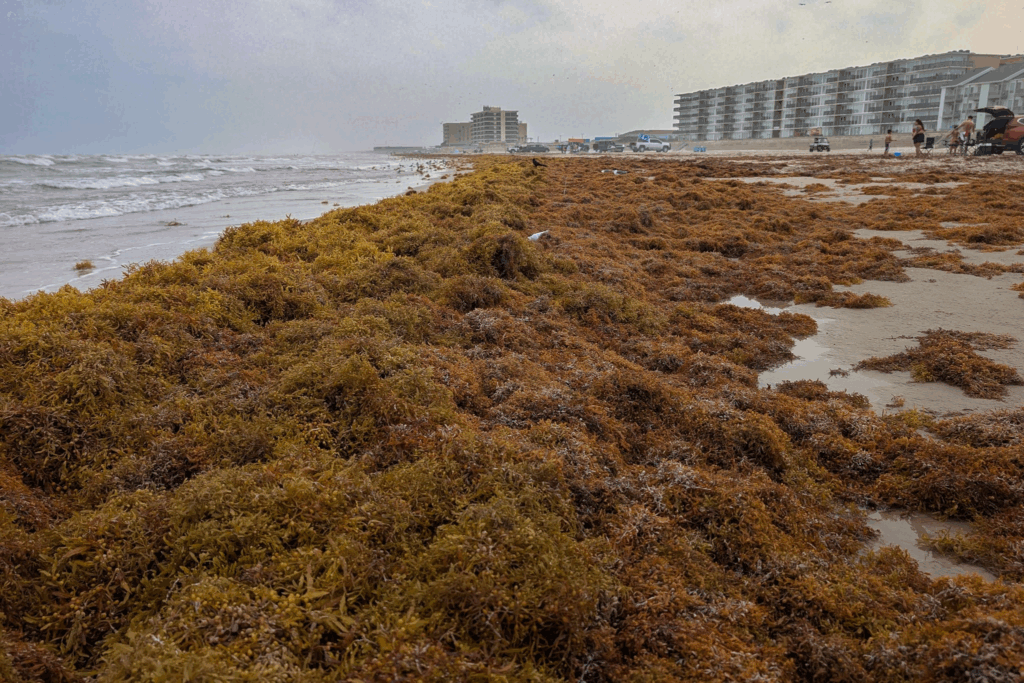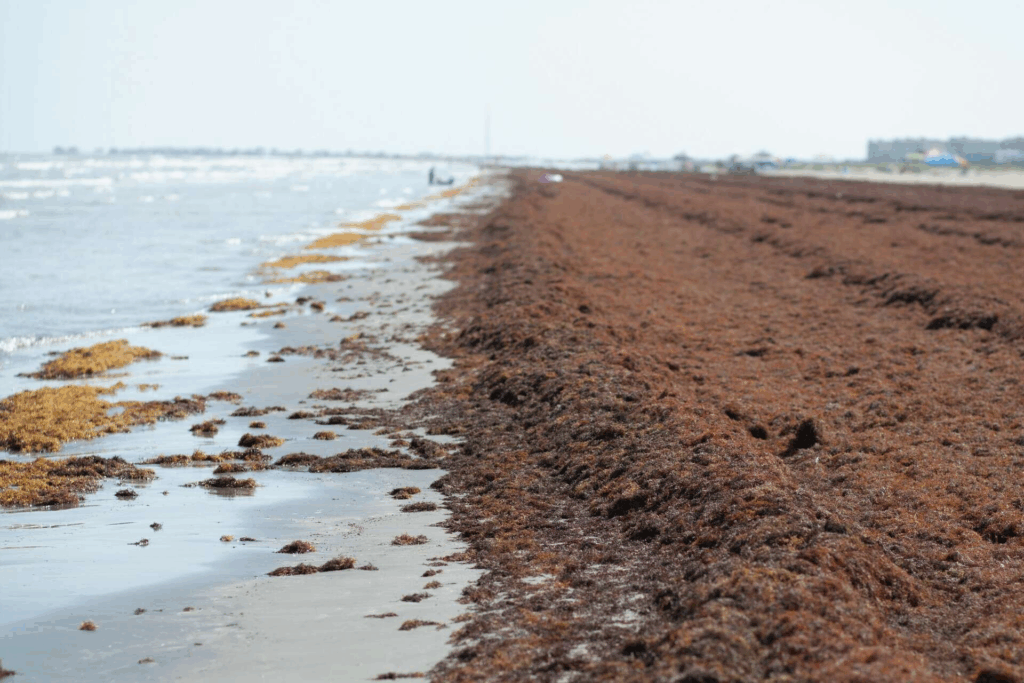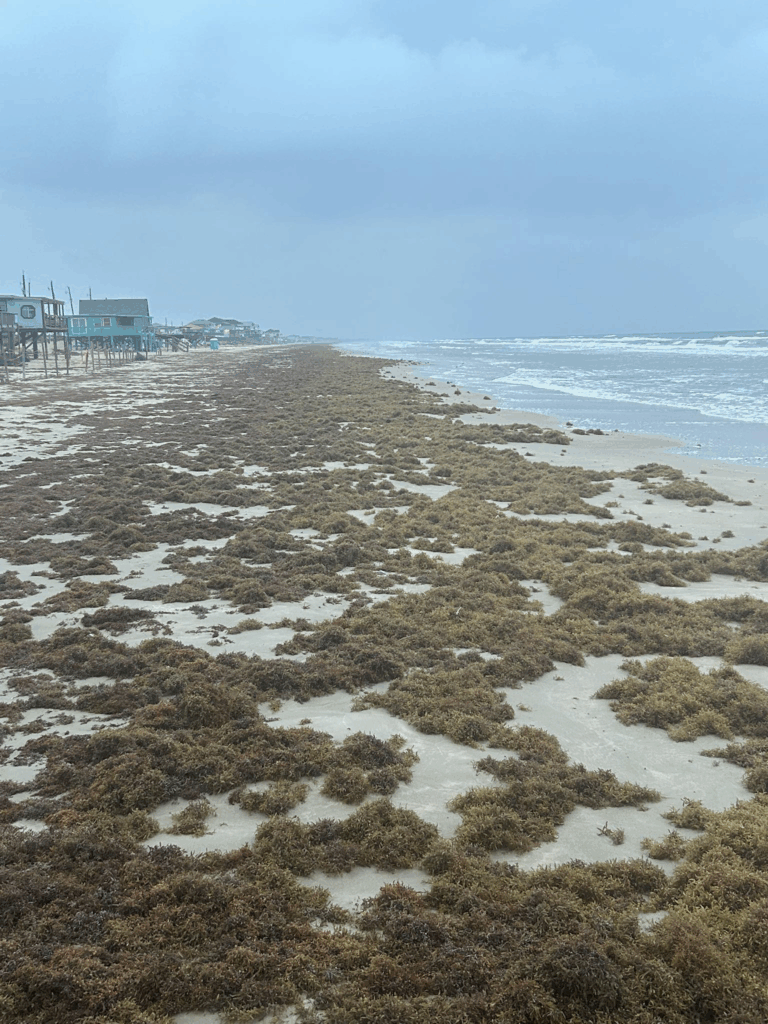A mysterious and growing natural phenomenon is unfolding along the Texas Gulf Coast, leaving scientists puzzled and beachgoers surprised. Massive piles of seaweed-like material, known as sargassum, have been washing ashore in unusually high volumes since early summer — reaching heights not seen in over a decade.

While sargassum blooms are common during warm months, this year’s surge is beyond ordinary. In some locations, mounds of tangled seaweed now rise waist-deep, covering entire stretches of beach, blocking pathways, and emitting a pungent odor as it decomposes in the sun.

What’s more perplexing is that satellite data and local water samples have not revealed any consistent environmental triggers. Some researchers suspect unusual oceanic currents or changes in nutrient runoff, while others are investigating whether human activities upstream — including agriculture and climate change — may be accelerating the bloom in unexpected ways.

Beyond the scientific mystery, the situation is causing practical challenges for tourism and environmental management. Crews in Galveston and Corpus Christi are working daily to remove the seaweed, but the tide brings more in every night.